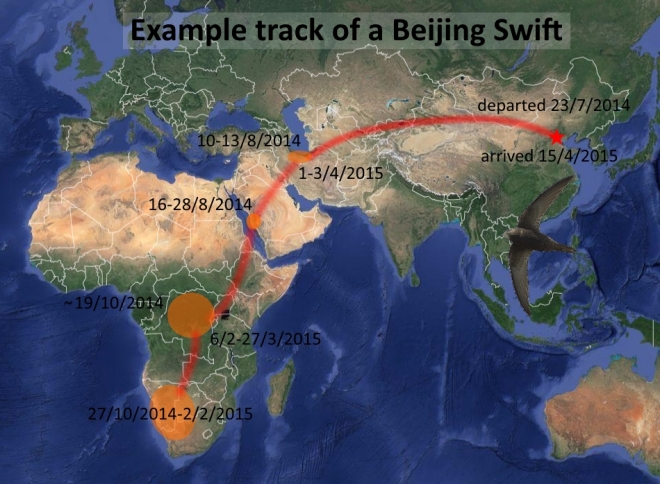 A Nova Zelanda queden uns 90 Kakapos (Strigops habroptilus), sent l’espècie de lloro més amenaçada i peculiar del món: és nocturn, no vola, i pesa fins a 3.5 Kg. Des de l’any 1989 se’ls proporciona menjar suplementari que els ajuda a criar amb èxit, però naixien un 70% de mascles, disminuint el ritme de recuperació de l’espècie per falta de femelles.
A Nova Zelanda queden uns 90 Kakapos (Strigops habroptilus), sent l’espècie de lloro més amenaçada i peculiar del món: és nocturn, no vola, i pesa fins a 3.5 Kg. Des de l’any 1989 se’ls proporciona menjar suplementari que els ajuda a criar amb èxit, però naixien un 70% de mascles, disminuint el ritme de recuperació de l’espècie per falta de femelles.José Luis Tella, aplicant els coneixements actuals sobre regulació del sexe en aus va suggerir que si les femelles deixaven d’estar tan ben alimentades la proporció de sexes tornaria a ser la normal (50%). Això és així perquè se sap que femelles en bona condició física tendeixen a produir més descendència del sexe que més costa criar (entre d’altres coses), que en aquest cas son els mascles.
Doncs bé, l’equip neozelandès que s’ocupa de la conservació d’aquesta espècie (Robertson i col•laboradors) va seguir aquests consells, donant menjar suplementari només a les femelles que realment lo necessitaven para criar. D’aquesta manera van revertir la mala tendència de la proporció de sexes, millorant les expectatives de recuperació del Kakapo, i posant de manifest la fina línia que separa la “ciència bàsica” de l’“aplicada”.
> Tella, J.L. 2001. Sex-ratio theory in conservation biology. TREE 16: 76-77
> Robertson, B.C. et al. 2006. Sex allocation theory aids species conservation. Biol. Lett. Doi:10.1098/rsbl.2005.0430
Photo by Brent Barrett (Flickr; Creative Commons)
----------------------- ESPAÑOL ------------------------
Kakapo: ciencia básica y biología de la conservación
 En Nueva Zelanda quedan unos 90 kakapos (Strigops habroptilus), que constituyen la especie de loro más amenazada y peculiar del mundo: es nocturna, no vuela, y pesa hasta 3,5 Kg. Desde el año 1989 se les proporciona comida suplementaria, que les ayudaba a criar con éxito, pero nacían un 70% de machos, disminuyendo el ritmo de recuperación de la especie por falta de hembras.
En Nueva Zelanda quedan unos 90 kakapos (Strigops habroptilus), que constituyen la especie de loro más amenazada y peculiar del mundo: es nocturna, no vuela, y pesa hasta 3,5 Kg. Desde el año 1989 se les proporciona comida suplementaria, que les ayudaba a criar con éxito, pero nacían un 70% de machos, disminuyendo el ritmo de recuperación de la especie por falta de hembras.José Luis Tella, aplicando los conocimientos actuales sobre regulación del sexo en aves, sugirió que si las hembras dejaban de estar tan bien alimentadas, la proporción de sexos volvería a ser la normal (50%). Y eso es así porque se sabe que las hembras de buena condición física tienden a producir más descendencia de aquel sexo que más cuesta criar (entre otras cosas), que en este caso son los machos.
Pues bien, el equipo neozelandés que se ocupa de la conservación de esta especie (Robertson y colaboradores) siguió estos consejos, dando comida suplementaria sólo a las hembras que realmente la necesitaban para criar. De esta manera invirtieron la mala tendencia de la proporción de sexos, mejorando las expectativas de recuperación del kakapo, y poniendo de manifiesto la fina línea que separa la "ciencia básica" de la "aplicada".
> Tella, J.L. 2001. Sex-ratio theory in conservation biology. TREE 16: 76-77 > Robertson, B.C. et al. 2006. Sex allocation theory aids species conservation. Biol. Lett. Doi:10.1098/rsbl.2005.0430
Photo by Brent Barrett (Flickr; Creative Commons)

















































































.jpg)

0 comentarios:
Post a Comment